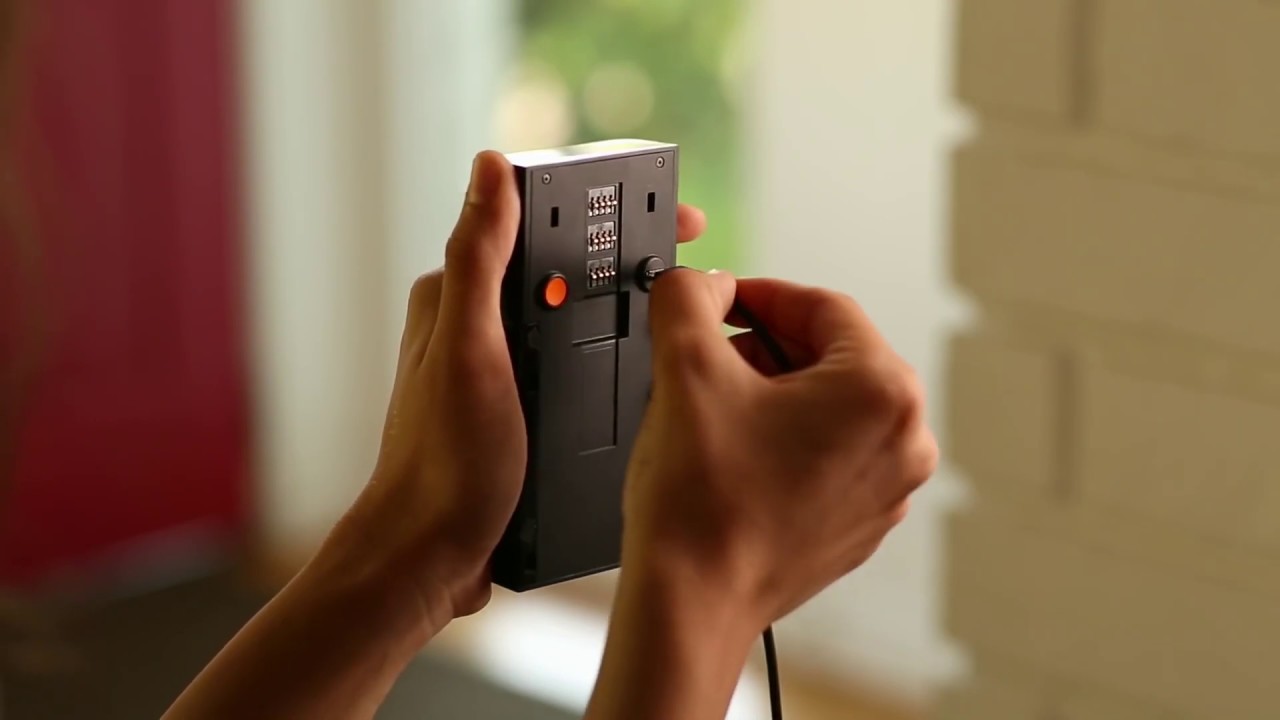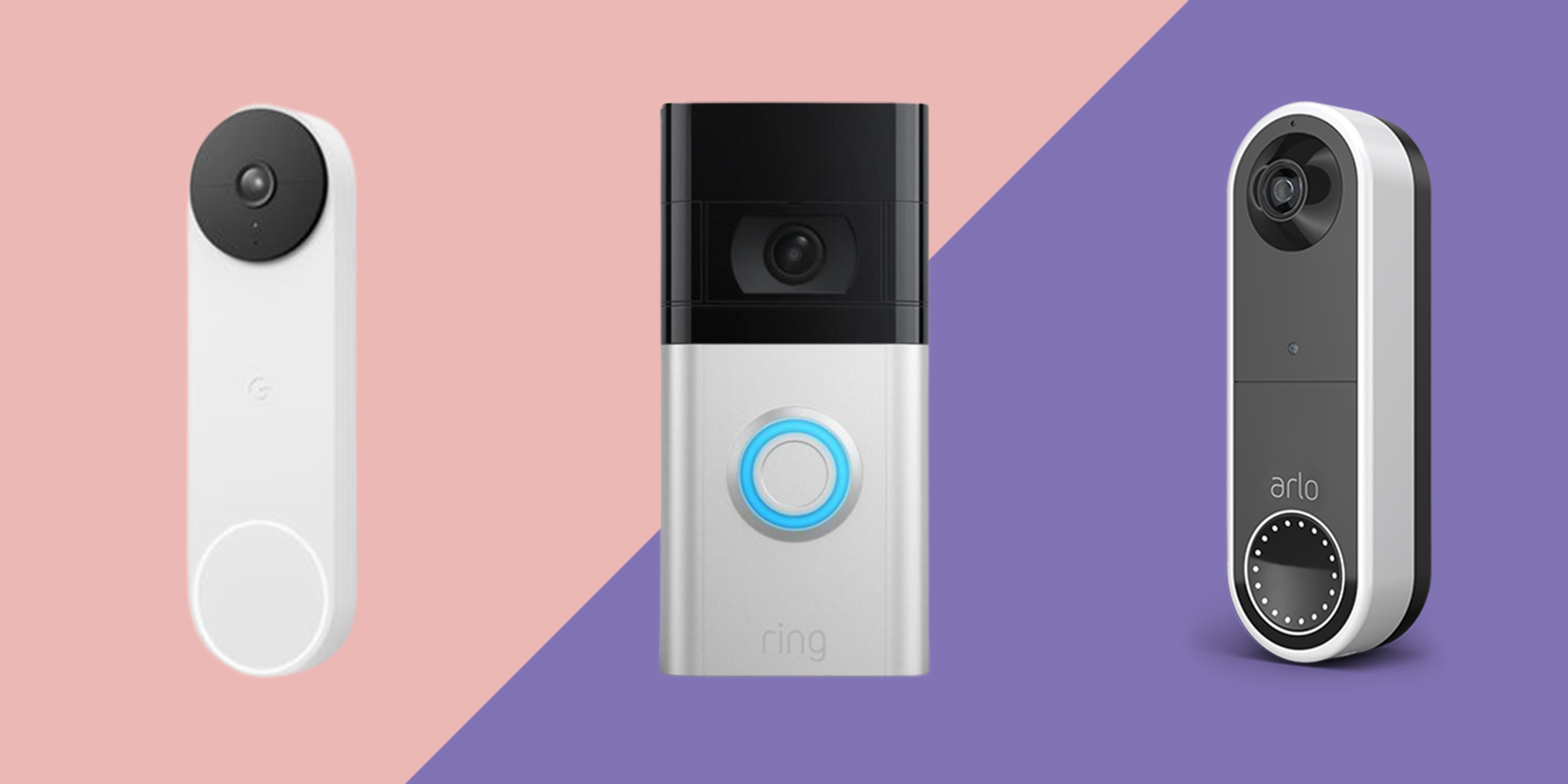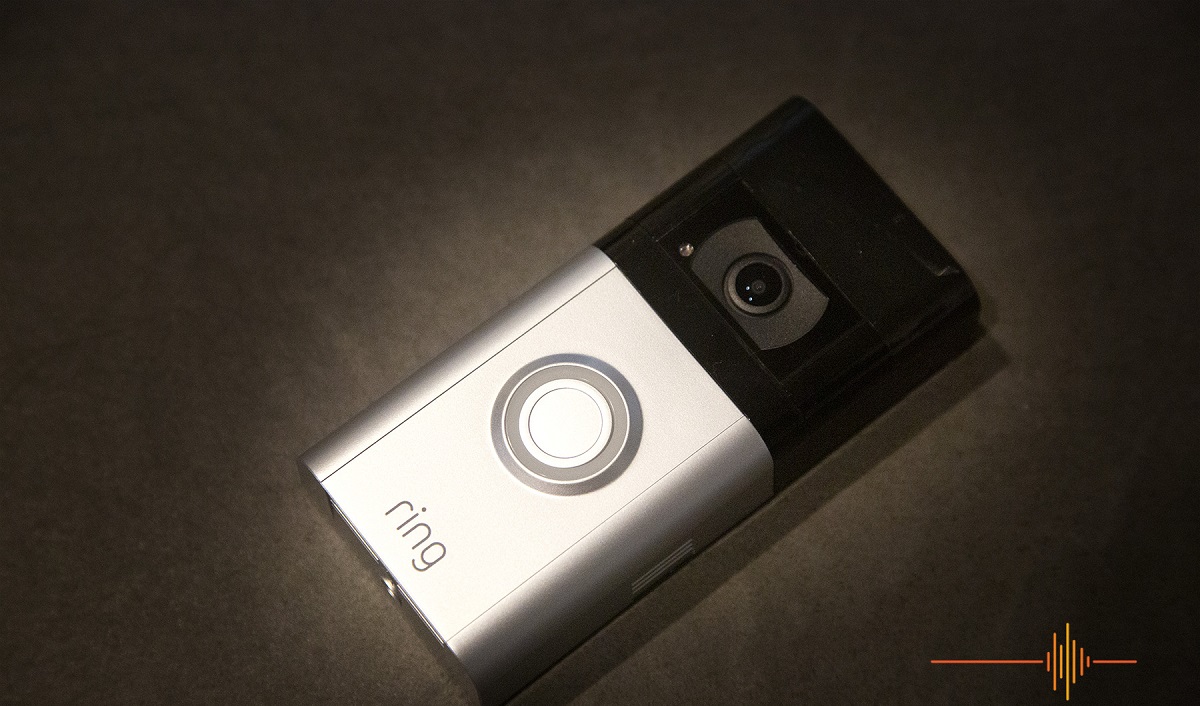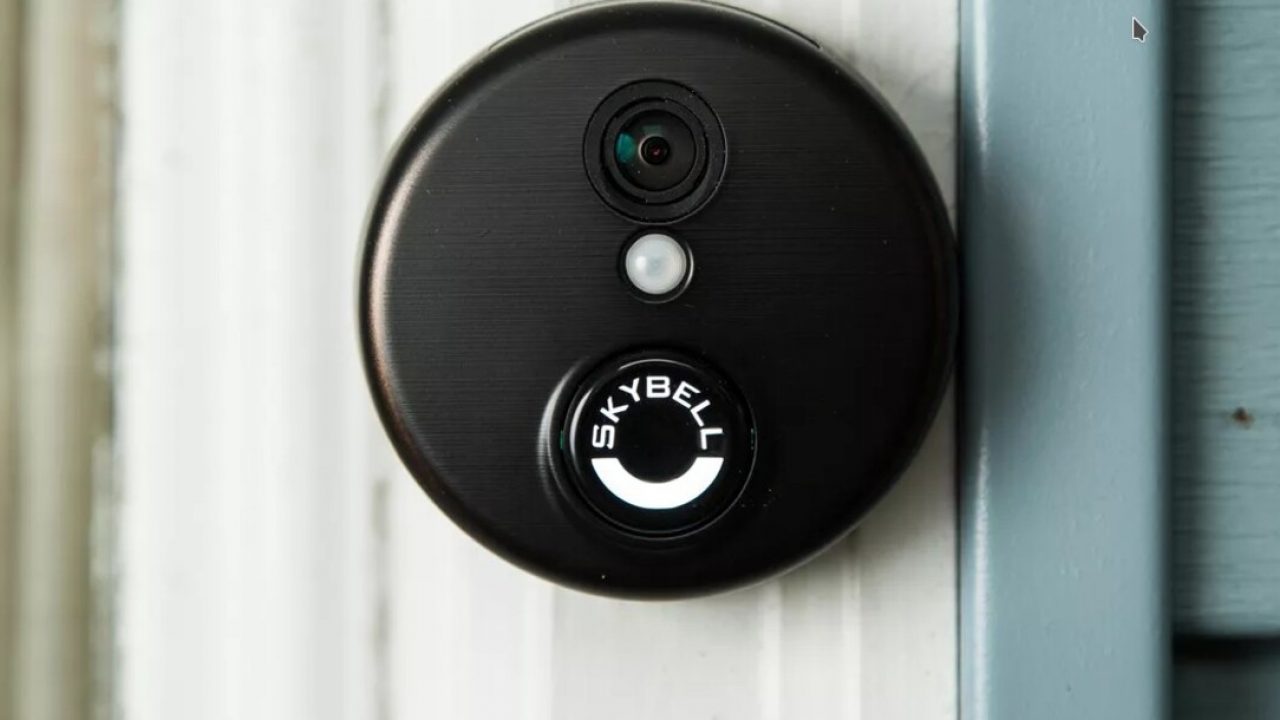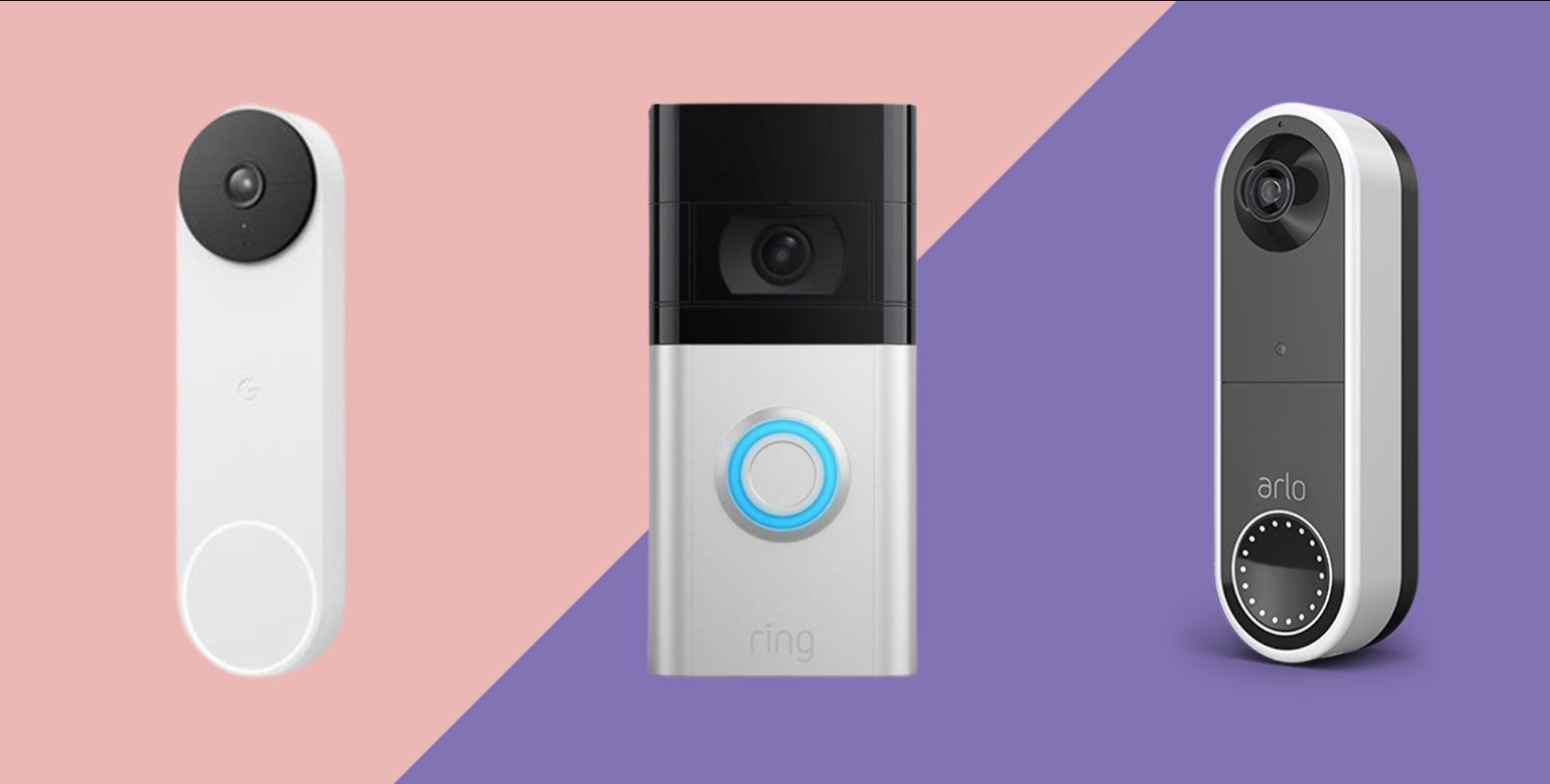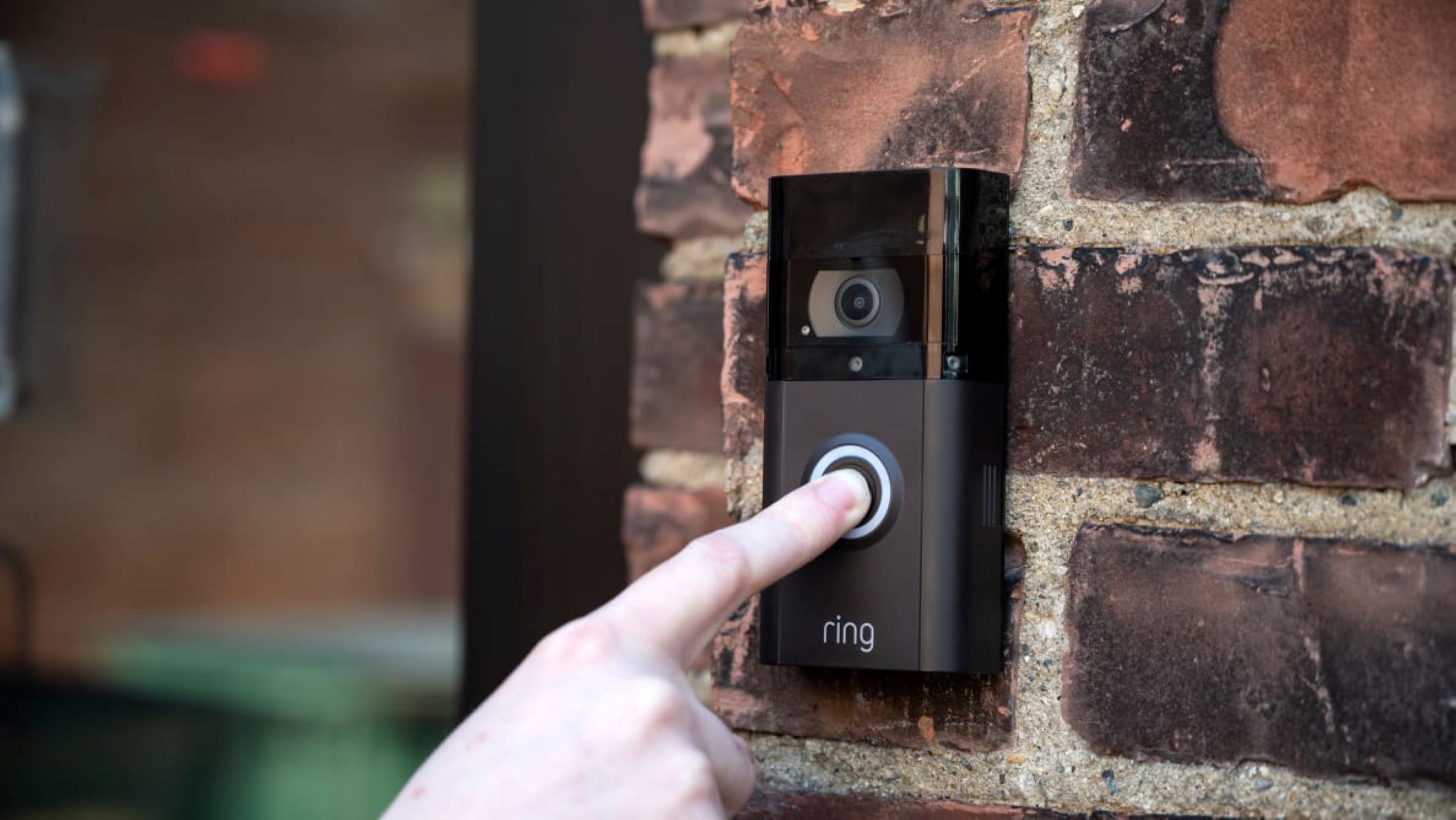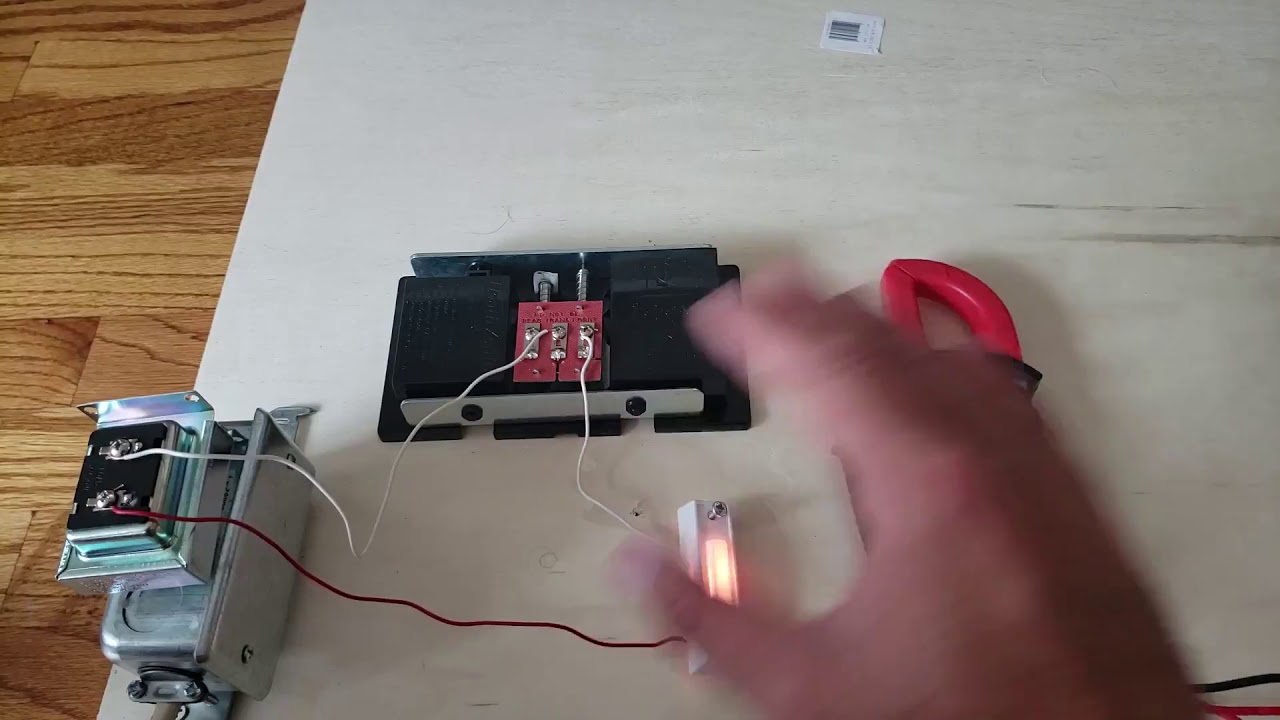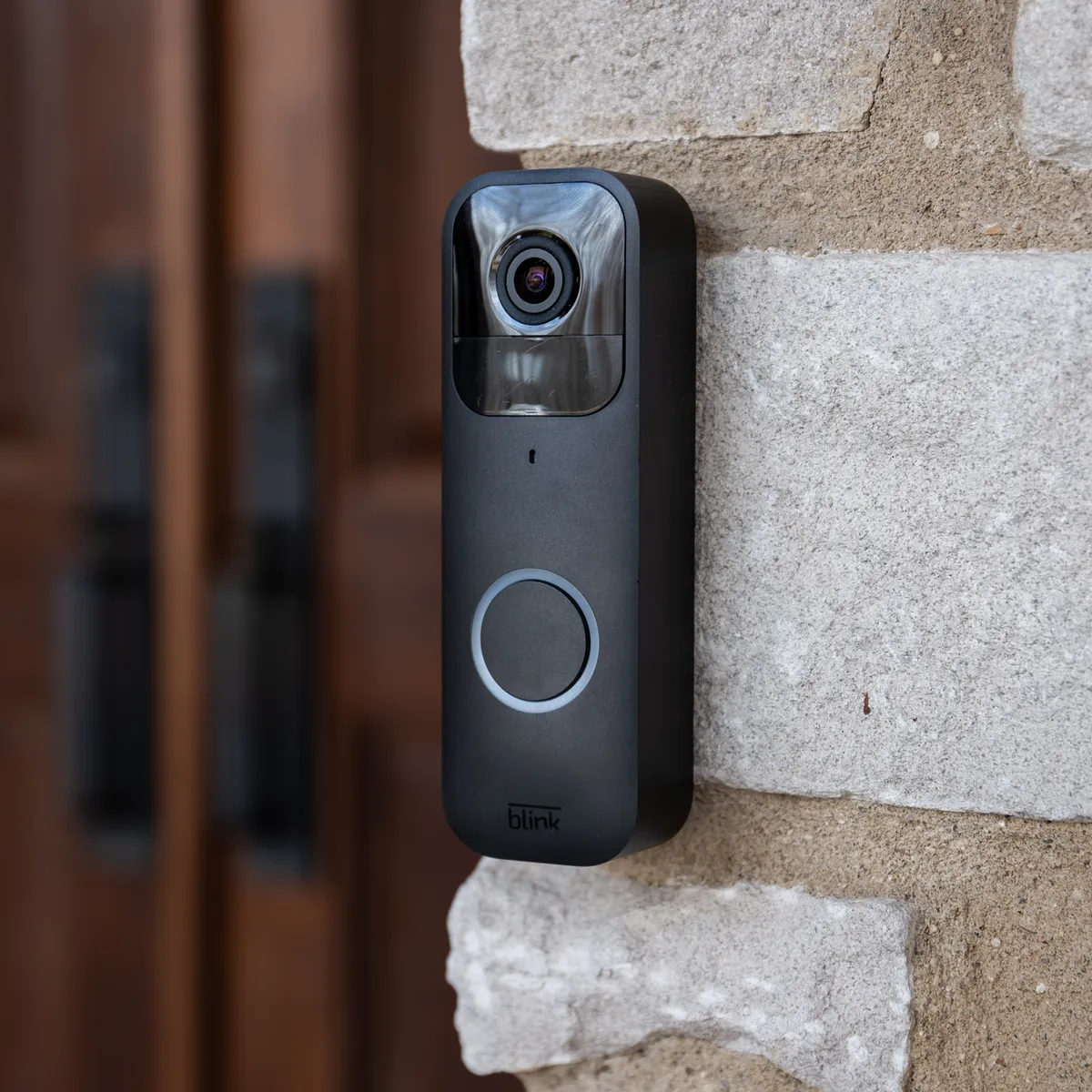Introduction
Welcome to the world of smart home technology, where innovative gadgets are revolutionizing the way we live. One such gadget that has gained immense popularity in recent years is the video doorbell. Gone are the days when you had to rely on a peephole or a traditional doorbell to see who was at your doorstep. With a video doorbell, you can now have a clear view of visitors and communicate with them, all from the comfort of your smartphone or tablet.
A video doorbell combines the functionality of a traditional doorbell with a built-in camera and other smart features. It allows you to see, hear, and speak to anyone who approaches your front door, whether you’re at home or away. Whether it’s a delivery person dropping off a package, a neighbor checking in, or even an unexpected visitor, a video doorbell offers convenience, security, and peace of mind.
In this article, we will delve into the world of video doorbells, exploring how they work and the benefits they offer. We will take a closer look at the components that make up a video doorbell, the technology behind it, and the various features that enhance its functionality. By the end of this article, you will have a thorough understanding of video doorbells, allowing you to make an informed decision if you’re considering adding one to your home.
So, let’s dive in and uncover the fascinating world of video doorbells!
What is a Video Doorbell?
A video doorbell is a smart device that combines the functionality of a traditional doorbell with a built-in camera and other advanced features. Unlike a conventional doorbell that simply alerts you to the presence of someone at your front door, a video doorbell allows you to see, hear, and communicate with the person remotely, using your smartphone, tablet, or computer.
Video doorbells have gained immense popularity due to the convenience and security they offer. They provide homeowners with a real-time video feed of their front door, enabling them to monitor their property, interact with visitors, and even deter potential intruders.
The primary component of a video doorbell is its camera. Equipped with high-definition resolution and wide-angle lenses, the camera captures a clear and comprehensive view of your doorstep. Some advanced video doorbells even offer features like night vision and motion detection, ensuring that you receive instant alerts whenever someone approaches your front door.
In addition to the camera, video doorbells also have built-in speakers and microphones, enabling two-way communication. This means that you can speak to the person at your doorstep, whether it’s a delivery person, a family member, or even an unexpected visitor. The ability to have a conversation with someone without physically opening the door adds an extra layer of security and convenience.
Aside from the basic functions, video doorbells often come with additional features. Some models have integrated smart door locks, allowing you to remotely unlock or lock your door for trusted guests or service providers. Others offer cloud storage options, which allow you to store and access recorded videos of your doorstep activity.
To install a video doorbell, you typically replace your existing doorbell with the new device. Most video doorbells use Wi-Fi to connect to your home network, allowing you to access the live video feed and control the settings via a mobile app. It’s essential to ensure that your internet connection is reliable and secure to maximize the functionality of your video doorbell.
Now that we’ve defined what a video doorbell is and its core components, let’s explore in detail how these innovative devices actually work.
Components of a Video Doorbell
A video doorbell comprises several key components that work together to provide its functionality and convenience. Understanding these components can help you make an informed decision when choosing a video doorbell for your home. Let’s take a closer look at each of these components:
- Camera: The camera is the most critical component of a video doorbell. It captures a live video feed of your doorstep and allows you to see who is at your door in real-time. High-definition resolution and wide-angle lenses ensure a clear and comprehensive view.
- Microphone and Speaker: The built-in microphone and speaker enable two-way communication between you and the person at your doorstep. You can hear what they are saying and speak to them, even if you’re not physically present.
- Motion Sensors: Many video doorbells come equipped with motion sensors that detect movement near your doorway. When triggered, these sensors send instant alerts to your smartphone, notifying you of any activity at your front door.
- Wi-Fi Connectivity: Video doorbells connect to your home’s Wi-Fi network, allowing you to access the live video feed and control settings through a companion app on your smartphone or device. It’s crucial to have a reliable and secure Wi-Fi network for seamless performance.
- Mobile App: A video doorbell is usually paired with a mobile app that enables you to control and monitor the device. With the app, you can view the live video feed, receive notifications, adjust settings, and even review recorded footage.
- Power Source: Video doorbells can be powered by batteries or wired into your existing doorbell wiring. Battery-powered models offer flexible installation but require regular battery replacements or recharging, while wired models provide a continuous power supply.
- Storage Options: Some video doorbells offer cloud storage options, allowing you to save and access recorded footage. Others may have built-in storage, like an SD card slot, for local video storage. The storage capacity and options vary depending on the brand and model.
- Smart Integrations: Many video doorbells integrate with other smart home devices, such as smart locks or home security systems. This allows you to create a comprehensive and interconnected home security ecosystem.
By considering these components and their features, you can choose a video doorbell that meets your specific needs and provides the security and convenience you desire for your home.
How Video Doorbells Work
Video doorbells are designed to provide a seamless and convenient way to monitor and communicate with visitors at your front door. Understanding how they work can give you a deeper appreciation for the technology behind these innovative devices. Let’s explore the step-by-step process of how video doorbells operate:
- Activation: When someone approaches your front door, video doorbells have built-in motion sensors that detect the movement. Once triggered, the camera activates and starts recording the video feed.
- Recording: The camera captures a live video feed of the visitor standing at your front door. With high-definition resolution and wide-angle lenses, it provides a clear and comprehensive view, allowing you to see the visitor’s face and any activity around the area.
- Transmission: The video doorbell transmits the recorded video feed to your smartphone or device through a Wi-Fi connection. This allows you to view the live video feed in real-time, no matter where you are. The transmission happens through a companion app, specifically designed for the video doorbell.
- Notifications: Simultaneously, the video doorbell sends a notification to your smartphone or device, letting you know that someone is at your front door. These notifications can be customized, allowing you to receive alerts based on specific triggers, such as motion detection or doorbell button pressed.
- Two-way Communication: With built-in speakers and microphones, video doorbells enable two-way communication. This means that you can speak to the visitor via the app on your smartphone or device, as if you were physically present at the door. Similarly, you can hear their responses through the built-in speaker.
- Storage Options: Depending on the model and brand, video doorbells offer various storage options. Some video doorbells provide built-in storage, such as an SD card slot, for local video storage. Others offer cloud storage, allowing you to save and access recorded footage remotely. The storage capacity and options may vary, so it’s important to choose the one that best suits your needs.
By following this sequence of steps, video doorbells provide you with a real-time view of your doorstep, allowing you to monitor and communicate with visitors, even if you are not physically present at home. Whether you’re expecting a package, waiting for a guest, or simply want to enhance the security of your home, video doorbells offer convenience, peace of mind, and a sense of control.
Activation
The first step in how video doorbells work is the activation process. Video doorbells are equipped with built-in motion sensors that detect movement near your front door. As soon as someone approaches your doorstep, these sensors are triggered, signaling the video doorbell to activate.
Depending on the sensitivity settings of the motion sensors, the doorbell may activate for any movements in its specified range. This could include visitors walking towards your front door, delivery personnel dropping off packages, or even stray animals passing by.
Once activated, the video doorbell swiftly transitions from a dormant state to an active mode, ready to capture and record the upcoming events at your doorstep. This activation occurs seamlessly and in real-time so that you can always stay informed about any activity outside your home.
It’s worth noting that different video doorbell models may have varying levels of motion sensor sensitivity, allowing for customization based on your preferences and the specific needs of your home. By adjusting these settings, you can fine-tune the activation triggers to match your requirements.
Activation is a crucial step in the video doorbell’s operation, as it initiates the recording and transmission processes, enabling you to receive live video feeds, notifications, and communicate with visitors, regardless of your location.
In the next section, we will explore the recording process and how video doorbells capture real-time footage of your doorstep activity.
Recording
Once activated, video doorbells begin the process of recording the events and activity at your front door. The recording feature is one of the core functionalities that sets video doorbells apart from traditional doorbells.
Equipped with high-definition resolution and wide-angle lenses, video doorbells capture clear and comprehensive footage of your doorstep area. The camera lens captures a live video feed, providing you with a real-time view of who is at your door and any activity that may be occurring.
The recorded footage is typically stored either locally or in the cloud, depending on the storage options provided by your video doorbell model. Some video doorbells have built-in storage capabilities, such as an SD card slot, allowing you to store and access the recorded footage directly on the device itself.
Other video doorbells offer cloud storage, where the recorded footage is securely stored online. This provides the advantage of accessing and reviewing the recordings from anywhere, using the companion app on your smartphone or device.
The length of time that the video doorbell records can vary depending on the specific settings and storage capacity. Some models have continuous recording, capturing and saving footage as long as there is motion detected. Others may have customizable options, allowing you to set specific recording durations or times during the day.
In addition to motion-based recording, some video doorbell models also have an option for on-demand recording. This enables you to manually start recording when desired, giving you more control over capturing specific events or interactions.
Recording is a crucial feature of video doorbells as it allows you to review past events, monitor any suspicious activity, and have a comprehensive record of who visited your doorstep. Whether you’re tracking a delivery, checking on the activities around your home, or investigating any security concerns, the recording functionality of video doorbells ensures you have the necessary footage at your fingertips.
In the following section, we will explore how the recorded footage is transmitted and made accessible to you through notifications and live feeds.
Transmission
Once the video doorbell has recorded the footage of your front door, the next step is to transmit this recorded video to your smartphone or device. The transmission process plays a crucial role in providing you with real-time access to the live video feed and recorded footage.
Video doorbells utilize Wi-Fi connectivity to establish a connection between the doorbell and your home network. This enables seamless communication and data transfer between the video doorbell and your smartphone or device.
Through a dedicated companion app, specifically designed for the video doorbell, the recorded video is transmitted to your smartphone or device in real-time. The app acts as the intermediary, receiving the video feed from the video doorbell and displaying it on your device’s screen.
The transmission process ensures that you stay connected to your front door, regardless of your physical location. As long as you have an internet connection on your smartphone or device, you can access the live video feed and view the recorded footage from anywhere in the world.
In addition to providing access to the video feed, the transmission process also enables other important functionalities. This includes receiving instant notifications on your smartphone or device whenever there is activity detected at your front door. These notifications help you stay informed about visitors, deliveries, or any potential security concerns in real-time.
The transmission of the video feed and notifications occurs quickly and efficiently, ensuring that you are promptly updated about any activity at your doorstep. This real-time access allows you to make informed decisions about responding to visitors, interacting with delivery personnel, or monitoring the security of your home.
Overall, the transmission process is a crucial step in how video doorbells work. It establishes the connection between the video doorbell and your smartphone or device, enabling you to view the live video feed, receive notifications, and actively participate in the monitoring and communication process.
In the next section, we will explore the two-way communication feature of video doorbells, which allows you to interact with visitors at your front door.
Notifications
One of the key features of video doorbells is the ability to receive instant notifications on your smartphone or device. These notifications play a crucial role in keeping you informed about any activity or visitors at your front door, even when you are away from home.
Video doorbells are equipped with motion sensors that detect movement near your doorstep. When the motion sensors are triggered, such as when someone approaches your front door, the video doorbell sends an immediate notification to your smartphone or device.
These notifications can be customized based on your preferences and the specific features of your video doorbell. You may receive a push notification, an email, or even a text message, depending on the settings you have selected.
Notifications provide you with real-time updates about the activity at your front door, ensuring that you stay in the loop and can respond accordingly. Whether it’s a package delivery, a family member returning home, or even a potential security concern, these notifications keep you informed and give you a sense of control over your home’s security.
In addition to alerting you about activity, notifications also provide a quick way to access the live video feed of your front door. By tapping on the notification, you can open the companion app on your smartphone or device and view the live video feed in real-time.
This immediate access to the live video feed allows you to assess the situation, see who is at your doorstep, and make informed decisions about how to respond. Whether you want to speak to the visitor, monitor their actions, or simply observe the activity, notifications enable you to do so seamlessly.
With customizable notification settings, you can have control over the type and frequency of notifications you receive. This ensures that you are only alerted about the events that matter to you, minimizing unnecessary interruptions.
Notifications are a fundamental aspect of video doorbells, providing you with real-time updates and access to the live video feed of your front door. They offer convenience, peace of mind, and the ability to actively participate in monitoring your home’s security, no matter where you are.
In the next section, we will explore the two-way communication feature of video doorbells, which allows you to interact with visitors at your front door.
Two-way Communication
A standout feature of video doorbells is their ability to facilitate two-way communication between you and the visitors at your front door. This feature allows you to have a conversation with the person at your doorstep, no matter where you are.
Video doorbells are equipped with both a built-in microphone and speaker. When a visitor approaches your front door and the motion sensors are triggered, you can use the companion app on your smartphone or device to initiate a conversation.
Through the app, you can speak to the visitor, and your voice is transmitted through the video doorbell’s speaker. Similarly, you can hear the visitor’s responses through the built-in microphone.
This two-way communication feature provides numerous benefits. For instance, if you are expecting a delivery but are away from home, you can instruct the delivery person on where to leave the package or provide further instructions for secure delivery.
In the case of a visitor or neighbor, you can communicate with them directly and address their questions or concerns without having to physically open the door. This adds an extra layer of security and convenience, allowing you to control your interaction with the outside world.
Two-way communication can also serve as a deterrent for potential intruders. By engaging in conversation with someone at your front door, you give the impression that you are present and actively monitoring the situation, even if you are not physically at home.
Furthermore, the ability to communicate with visitors allows you to filter out unwanted solicitors or unexpected visitors. You can easily verify the identity of the person and decide whether or not to grant them access to your property.
In addition to live conversations, some video doorbells also offer pre-recorded messages that you can choose from to play when you are unable to respond immediately. This feature can be helpful in scenarios where you are busy or simply prefer not to engage in conversation at that moment.
The two-way communication feature of video doorbells enhances the convenience, security, and control you have over your home’s entrance. It ensures that you can always communicate with the people at your front door, providing you with peace of mind and the ability to manage interactions no matter where you are.
In the next section, we will explore the storage options available for recorded footage captured by video doorbells.
Storage Options
When it comes to video doorbells, having storage options for recorded footage is essential. Different video doorbell models offer various storage options, allowing you to choose the option that best fits your needs and preferences.
One common storage option is local storage. Some video doorbells have built-in storage capabilities, such as an SD card slot. This allows you to insert a memory card into the video doorbell, where the recorded footage is saved directly onto the card.
Local storage provides the advantage of having complete control over your recorded footage. You can easily access the memory card and review the footage on your own terms, without relying on an internet connection or third-party cloud storage.
Another storage option is cloud storage. Many video doorbell models offer the ability to store recorded footage in the cloud. This means that the footage is securely uploaded to remote servers and can be accessed through the companion app on your smartphone or device.
Cloud storage has several benefits. It ensures that your recorded footage is safe and protected even if the video doorbell is damaged or stolen. It also allows you to access the footage from any location, as long as you have an internet connection, offering convenience and flexibility.
Depending on the brand and model of the video doorbell, cloud storage options may vary. Some manufacturers provide a certain amount of free cloud storage, while others offer subscription plans for enhanced storage capacity or longer retention periods.
It’s important to consider the storage capacity and retention period when choosing a video doorbell. If you require long-term storage of footage or have multiple video doorbells in your home, a subscription-based plan with larger storage limits may be a preferable option.
Additionally, some video doorbells offer advanced features, such as video clip creation or the ability to download and share specific segments of recorded footage. These features can be useful for capturing important moments or providing evidence in case of any incidents.
Ultimately, the storage option you choose for your video doorbell depends on your specific needs, preferences, and budget. Whether you opt for local storage or cloud storage, having the ability to access and review recorded footage adds another layer of security and peace of mind to your home.
Now that we have explored the storage options available, let’s summarize the pros and cons of video doorbells in the next section.
Pros and Cons of Video Doorbells
Video doorbells offer a range of benefits, but it’s important to consider both the pros and cons before deciding to install one in your home. Here are some key advantages and disadvantages of video doorbells:
Pros:
- Enhanced Security: Video doorbells act as a visual deterrent and provide you with a live video feed, allowing you to monitor activity at your front door and potentially prevent break-ins or theft.
- Convenience: With a video doorbell, you can see and communicate with visitors without having to physically open the door, giving you added convenience and control.
- Remote Access: Video doorbells enable you to view the live video feed and receive notifications from anywhere using your smartphone or device, providing peace of mind, especially when you’re away from home.
- Package Delivery Management: Video doorbells allow you to communicate with delivery personnel and provide instructions for secure package delivery, ensuring that your packages are handled the way you desire.
- Integration with Smart Home Systems: Many video doorbells can be integrated with other smart home devices, allowing for seamless automation and control of your home’s security ecosystem.
Cons:
- Reliance on Stable Internet Connection: Video doorbells require a stable internet connection to function effectively. Without a reliable internet connection, you may experience delays in notifications or difficulties accessing the live video feed.
- Privacy Concerns: Some individuals may have concerns about their privacy with video doorbells, as they capture footage of activity happening outside their home. It’s important to ensure that the use of video doorbells remains within legal and ethical boundaries.
- Cost: Video doorbells can involve an upfront cost for purchasing the device, and some models may require ongoing subscription fees for additional features or cloud storage. It’s important to consider your budget when choosing a video doorbell.
- Installation: Depending on the video doorbell model and your existing infrastructure, installation may require wiring or professional assistance. DIY installation is possible for some models, but it’s important to follow the manufacturer’s instructions carefully.
Considering these pros and cons will help you make an informed decision about whether a video doorbell is the right choice for your home. It’s important to weigh the advantages and disadvantages to determine if the benefits outweigh any potential drawbacks.
In the next section, we will wrap up our exploration of video doorbells and summarize the key points covered in this article.
Conclusion
Video doorbells have transformed the way we monitor and interact with visitors at our front doors. From convenience and enhanced security to remote access and package delivery management, these smart devices offer a range of advantages for homeowners.
In this article, we explored the key components of video doorbells, including the camera, microphone, motion sensors, Wi-Fi connectivity, mobile app, power source, and storage options. We also delved into the step-by-step process of how video doorbells work, from activation and recording to transmission, notifications, two-way communication, and storage.
While video doorbells bring many benefits, it’s important to consider the potential drawbacks, such as the reliance on a stable internet connection, privacy concerns, cost, and installation requirements. By weighing the pros and cons, you can make an informed decision about whether a video doorbell is the right fit for your home.
Ultimately, video doorbells provide homeowners with an extra layer of convenience, security, and peace of mind. They allow you to monitor and communicate with visitors in real-time, even when you’re away from home. Whether it’s managing package deliveries, screening unexpected visitors, or keeping an eye on your property, video doorbells offer a valuable addition to your home security system.
As technology continues to advance, so too will the capabilities and features of video doorbells. It’s important to stay informed about the latest developments in this field to make the most of this innovative smart home device.
So, if you’re considering upgrading your home’s doorbell system, take the time to explore the world of video doorbells, compare different models, and choose the one that best suits your needs and preferences. Embrace the convenience, security, and peace of mind that video doorbells bring and enjoy the benefits of a more connected and secure home.







